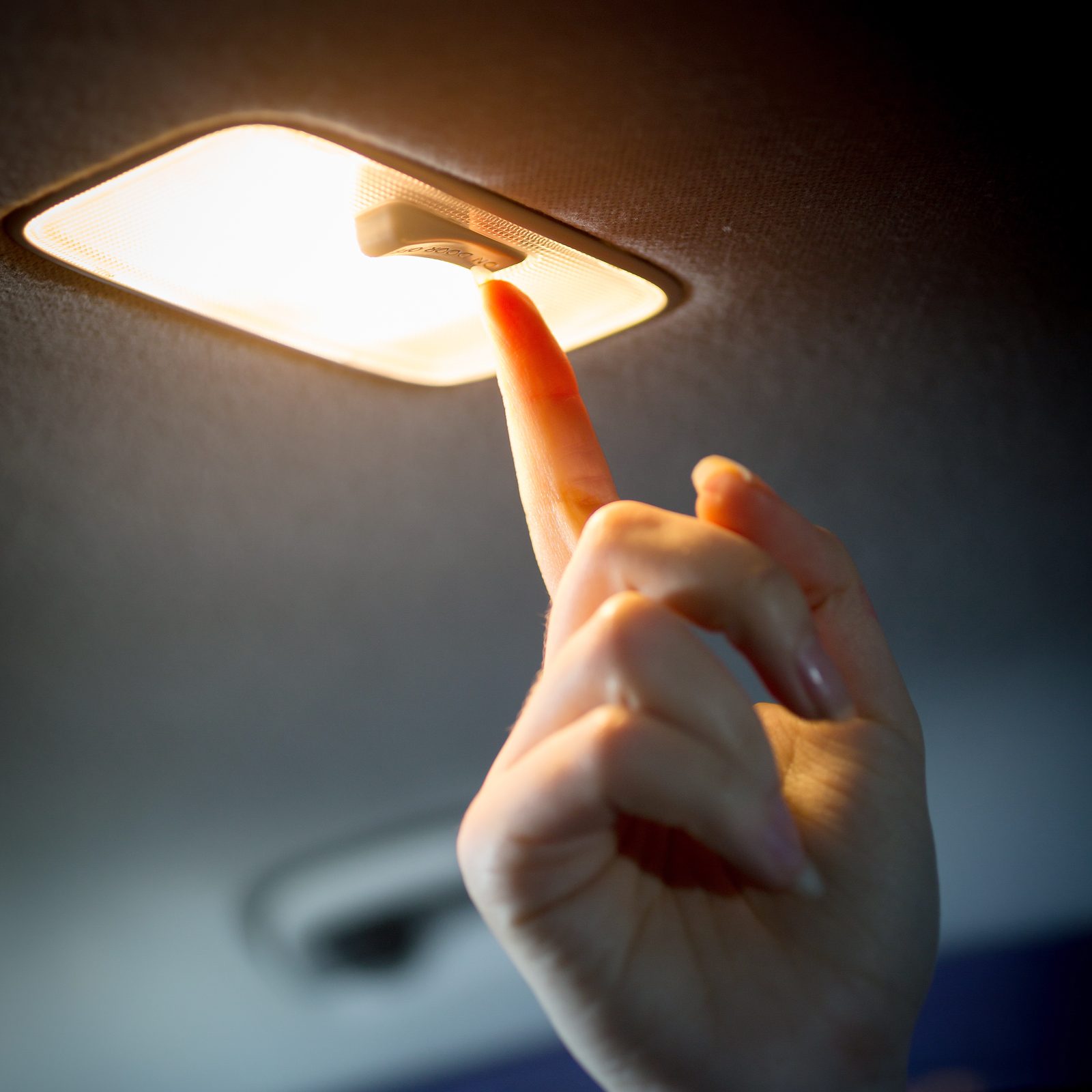Interior car LED lights are allowed in every state, but restrictions usually apply to preserve the view and avoid confusion with emergency vehicles.

Are Interior Car LED Lights Safe?

I find it distracting when someone turns on an interior light in the car when I’m at the wheel, and I usually complain when it happens.
Interior lights split my attention between the road and what’s going on inside the car. Driving on busy roads at night calls for undivided attention, because unpredictable things happen all the time. Cyclists wearing dark colors, pedestrians suddenly walking into traffic, and deer and skunks darting onto the roadway can turn into a tragedy or a mess if you don’t notice them in time.
Other people may think differently, especially regarding interior car LED lights. These make it easier for a passenger to read a book to a child, or search for something in a purse or bag. LED lights also allow the driver to monitor kids in the back seat. These and other benefits may outweigh how these lights interfere with seeing the road.
On This Page
What Are Interior Car LED Lights?
Every car has a dome light, and most have map lights to illuminate the area around the front seats. Factory-supplied bulbs on older vehicles are typically incandescent or halogen, but you can replace them with LED bulbs.
Because LEDs provide more light while consuming less power, this is usually a desirable upgrade. The inbuilt lights supplied with newer vehicles are usually already LEDs.
Another type of interior lighting is custom accent lighting. This can be installed on the dashboard, along the roof, around the seats or console, on the doors, and even on the steering wheel.
Model-specific accent lights may be available from the manufacturer. If not, you can usually find generic ones that will fit your vehicle. Accent lights come as individual fixtures or in strips. Some are battery-powered, while others connect to the car’s electrical system.
Are Interior Car LED Lights Safe?
Yes. LEDs are safer than incandescent and halogen bulbs. They’re electronic circuit components called diodes that glow as they rectify AC current into DC current.
Because they don’t rely on electrical resistance to provide light, they produce far less heat than bulbs that do, which reduces the fire risk. And because there’s no filament enclosed in glass, they’re less likely to break.
The safety of LEDs depends on how you use them. LEDs scattered around the floor, or on the seats below the driver’s sight line, usually don’t impact the view of the road. They can actually make the interior of a car safer by making it easier to see things.
Bright strip lights affixed to the seats, windows or roof are another matter. Inherently distracting, it can reflect off the windshield, making it harder to see outside. LEDs that are particularly bright, change colors or flash add an extra hazardous element.
Are Interior Car LED Lights Legal in All States?
Virtually every state allows motorists to install LED lights in their cars, and no state prohibits driving while they’re on. However, some states have restrictions similar to the ones imposed by the California Department of Motor Vehicles:
- Flashing lights are not allowed.
- Red lights can be visible only from the rear of the vehicle, not from the front. This avoids confusion with emergency vehicles.
- Blue lights visible through the windows are prohibited. This avoids confusion with police cars.
- After-market LEDs (those not installed by the manufacturer) must be permanently affixed. There can be no possibility of them falling while the vehicle is in motion.
- LEDs cannot interfere with the vehicle’s onboard diagnostic system. They must be inspected and approved by the Department of Motor Vehicles.(DMV).
If you aren’t sure whether your state imposes the same restrictions, check with your local DMV.
Interior Car LED Light Alternatives
Factory-installed LED interior lighting is a recent innovation in mainstream vehicles, first appearing on the Chevrolet Camaro and Kia Soul. If your car didn’t come with ambient lighting, you have several options. You can install LED bulbs in your existing fixtures, or add LED string lights, rope lights or some other type of accent lighting in the interior.
That’s about it. No other in-car lighting options are practical and legal.




















